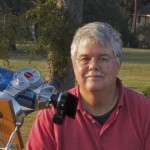Astronomy ambassadors to Chile: ALMA radio telescope – EarthSky
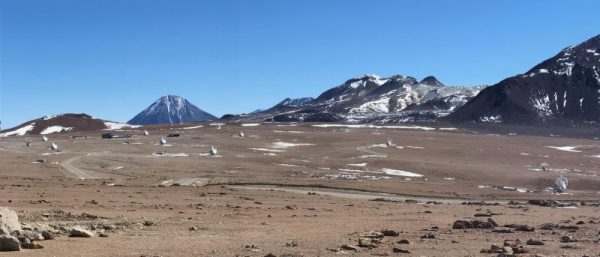
ALMA 40-foot (12-meter) antennas can cover an area up to 10 miles (16 km) across. Image via Rob Pettengill/NRAO/AUI/NSF.
Where do we come from? What are we? Where are we going? These questions are as old as humankind. The search for answers impels many quests, for example, the painter Gauguin’s voyage to Tahiti … and astronomers to the remote Chajnantor plateau in the Chilean Andes. That is the site of the Atacama Large Millimeter/sub-millimeter Array (ALMA), one of the most powerful telescopes on Earth.
The Array Operations Site (AOS) for ALMA is located at 16,500 feet (5,000 meters) of altitude. At that altitude, supplemental oxygen is required. Nearby in a more sheltered location – at 10,000 feet (3,000 meters) – is the ALMA Operations Support Facility (OSF) in the Atacama Desert. OSF hosts the couple of hundred scientists, engineers, and staff needed to operate and maintain the telescope. The massive amount of data produced by ALMA requires reduction, archive, and distribution centers on four continents to deliver observational data to investigating scientists.
The dedicated staff at the OSF, along with the dozen or two essential personnel at AOS during the day, must cope with isolation and separation from family and comforts of home. Most commute from Santiago and face about a six-hour commute, including the two-hour flight. A common shift is eight work days and four days off. Staff with families far away may spend six months apart. Pride, intelligence, and sense of purpose shone in everyone we spoke with from the director Sean Dougherty to the casino staff (casino is Chilean for cafeteria)!
All together, including the thousands needed at supporting locations, ALMA is a knowledge factory helping answer some of our species’ most profound questions. I visited there in late July and early August 2019 with the Astronomy in Chile Educator Ambassador Program, aka ACEAP. The ACEAP 2019 cadre were thrilled to have the rare opportunity to stay overnight at the OSF and make the 45-minute trip for a two-hour stay at the AOS high site. In exchange we all are sharing our experiences.
The day before included a tour of the OSF and presentations including one about ALMA’s role in the Event Horizon image of the M87 black hole shadow. We also heard about new capabilities for signal polarization measurements that will enable understanding of the motions of targets.
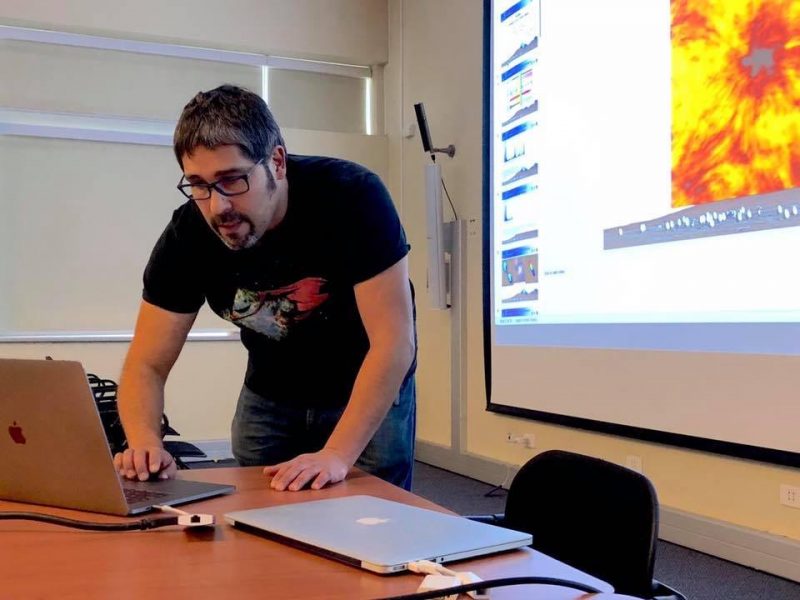
Paulo Cortes. Image via R. Pettengill (NRAO/AUI/NSF).
Paulo Cortes, the ALMA operations astronomer, dreamed of being a truck driver in a Chilean public school. His high school physics teacher prepared Paulo and a few others for university entrance exams. Now the whole world benefits from his talents and those of many others like him. Thank teachers! Just one small example of the human capital available to answer questions and solve problems that have proven too difficult for the developed world alone.
The lights of this large engineering and residence complex did nothing to dim the spectacular Atacama view of the Milky Way and Jupiter.
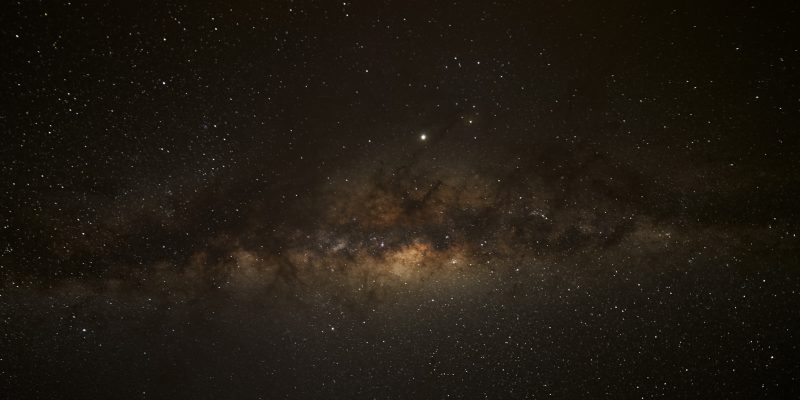
Jupiter above the Milky Way from ALMA OSF. Image via R. Pettengill (NRAO/AUI/NSF).
In the morning, not only did the ACEAP 2019 team have to pass a medical exam before proceeding, but drivers to the high site must pass one before every trip. Visitors are allowed a maximum of a two-hour visit. Essential staff are limited to six hours. No one is permitted to stay overnight. The day before our visit, staff was evacuated due to high winds.
We were fitted with our oxygen, then crammed into two trucks for the 45-minute trip. The road is straight and wide for a mountain road, because it is used to transport the giant dish antennas. A majestic snow-capped volcano dominated the view to our left. We also encountered several groups of wild vicuña. Near the AOS the ground looks remarkably like rover images of Mars with the blue sky the only hint that we are still on Earth.
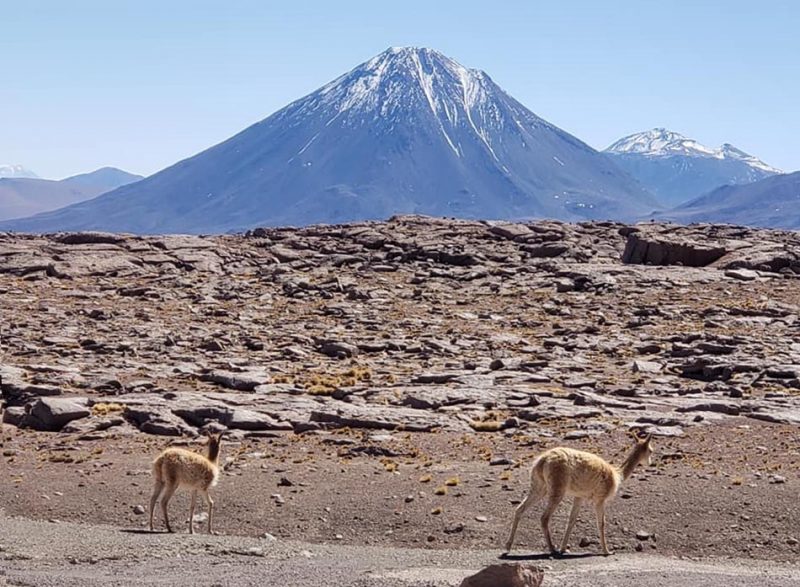
Road to ALMA AOS with vicuña and the Licancabur Volcano. Image via A. Borja/ NRAO /AUI /NSF).
After a brief stop at the small engineering building with the correlators that combine signals from the antennas, we begin touring the array.
ALMA includes both smaller antennas for sub-millimeter signals and larger ones for longer wavelengths. There are a total of 66 antennas: 54 of them are 40-foot (12-meter) dishes, and the other 12 dishes are about half that wide (7-meter). Antennas made in the U.S., Europe, and Japan have distinctive looks and parts, but function identically.
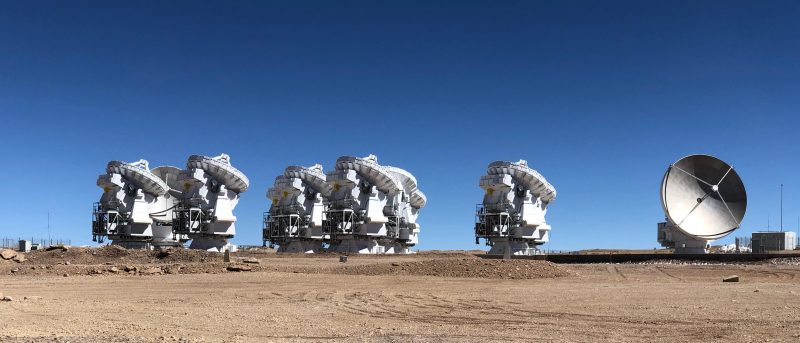
Japanese 7-meter radio dishes and a European 12-meter radio dish in a compact array. Image via R. Pettengill/NRAO/AUI/NSF.
We were lucky with a calm sunny day, but looks are deceptive. My roommate Art discovered his oxygen line was pinched when his fingertips started to become numb.
Huge antenna transporters position the dish antennas on mounting pads with sub-millimeter precision. A visit with Otto, the transporter, was a highlight worthy of a group picture.
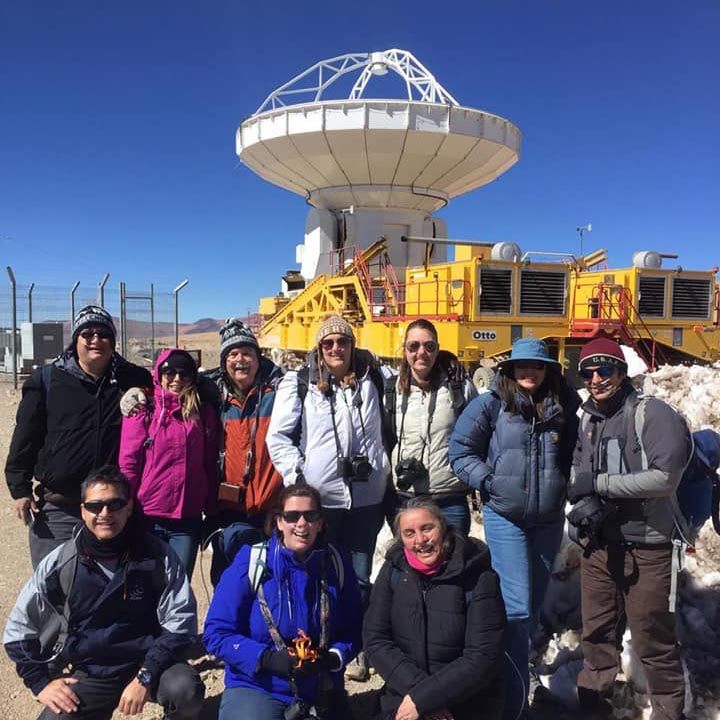
The ACEAP 2019 team with Sonia Daffau and our driver in front of Otto the transporter and an American dish. Image via V. Foncia (NRAO/AUI/NSF).
The ACEAP team went from ALMA to visits at the wonderful Tata Mallku – a private park focused on sustainable agriculture and cultural heritage – and Moon Valley, both near San Pedro. Back in Santiago, we were introduced to the powerful European Southern Observatories that will have to wait for other visits. The big picture of astronomy and economic development in Chile was given by Luis Chavarria, Director of Astronomy at Chile’s CONICYT.
I left with profound admiration for those who have created one of the great scientific enterprises of history in Chile. Thanks to the NSF, AUI, and National Optical and Radio Astronomy Observatories for making this trip possible. Learn about ACEAP and meet the 2019 and previous cadres at AstroAmbassadors.com. I’m entranced by the warmth of the people of Chile and the wonderful food and wine. The Texan in me may smuggle in a little hot sauce on the next visit, because the astrophotographer in me has to go back.
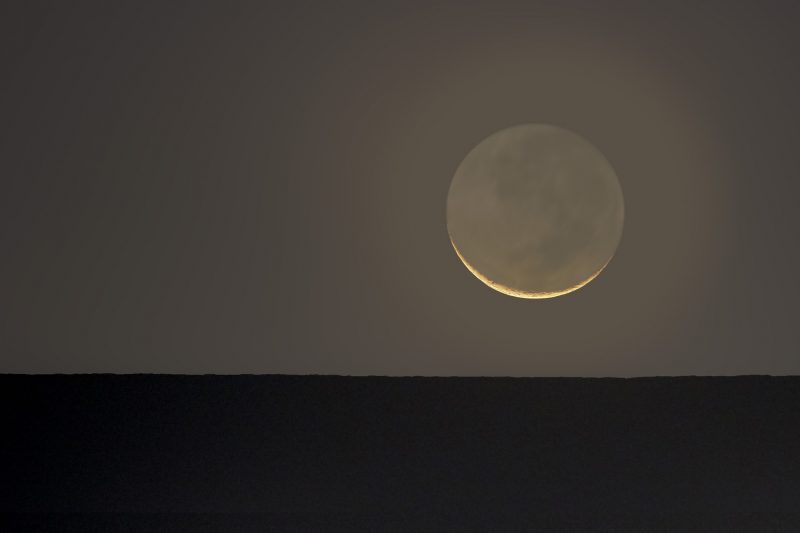
Even the familiar moon takes on a new look in the Atacama. Earthshine on the crescent moon takes on colors of the desert as it sinks behind a ridge, from the ALMA OSF Residencia. Image via Rob Pettengill/NRAO/AUI/NSF).
Bottom line: Report on the ALMA radio telescope in Chile from Robert Pettengill, a member of 2019’s Astronomy in Chile Educator Ambassador Program.
Read more: Astronomy ambassadors in Chile: Cerro Pachón and Cerro Tololo

